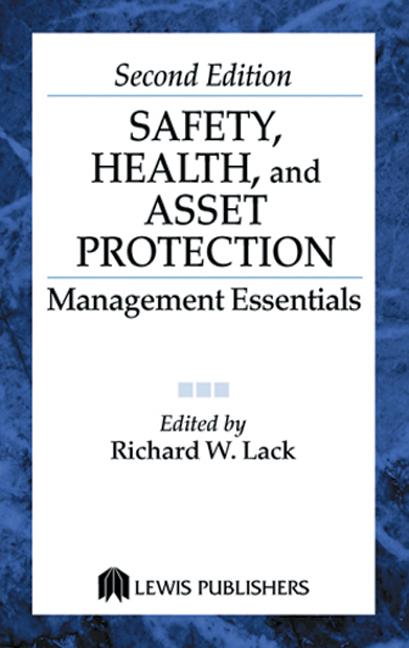Smart cars, smart vests for highway workers and how sleep disorders affect the heart were among the stories posted on ISHN.com this week.
A NIOSH Science Blog post
When your safety and your life depend on it, you need your equipment to fit properly. This is especially true in the workplace. Improper fit may prevent workers from performing their job duties safely and effectively.
As the Papal visit approaches, the U.S. Department of Transportation’s Federal Aviation Administration (FAA) is reminding residents of and visitors to Washington, DC, New York, and Philadelphia that these cities and the surrounding communities are No Drone Zones from September 22 through September 27, 2015.
A 32-year-old shop manager at a Council Bluffs, Iowa truck repair and service center died in an accident last week.
OSHA proposes more than $188K in fines for supermarket chain
Wegmans Food Markets Inc. bills itself as an industry leader and innovator. However, recurring hazards at its 1500 Brooks Ave. bakery in Rochester — and injuries to two workers — suggest a need for the supermarket chain to address workplace safety for its employees.
New York City, Wyoming, and Tampa, FL will get up to $42 million to pilot next-generation technology in infrastructure and in vehicles to share and communicate anonymous information with each other and their surroundings in real time – a development that U.S. Transportation Secretary Anthony Foxx said will reduce congestion and greenhouse gas emissions and cut the unimpaired vehicle crash rate by 80 percent.
MSHA’s fourth rescue station enhances response capabilities
The Mine Safety and Health Administration will open its newest mine rescue station tomorrow in Madisonville, Kentucky. The facility will serve mining operations in the Midwest in the event of a mine emergency, and joins similar emergency response stations in Beckley, West Virginia; Pittsburgh; and Price, Utah.
AEM kicks off safety awareness campaign
The Association of Equipment Manufacturers (AEM) has released a Top 10 list of common underground utility myths, along with the facts for safe underground utility installation, repair and maintenance. Safe machinery operation saves lives, and equipment manufacturers want underground utility industry professionals to always think safety on the jobsite.
Company failed to follow machine safety procedures
A 45-year-old worker lost part of three fingers when his left hand caught in a table saw at a Cordova company that fabricates reusable shipping containers. Doctors reattached the fingers, but had to amputate the tip of his left middle finger. The employee has been unable to return to work.
Building on more than a decade of cooperation and collaboration between the United States and China, OSHA Assistant Secretary Dr. David Michaels is in Beijing this week for a series of meetings with government officials, worker safety and health advocates, and industry representatives from both countries.
Health advocates: Tobacco companies change products to appeal to kids
The public will no longer have the opportunity to smoke Camel Crush Bold cigarettes. Nor will people get to puff on Pall Mall Deep Set Recessed Filter, Pall Mall Deep Set Recessed Filter Menthol and Vantage Tech 13 cigarettes.
One size does not fit all
Cities hosting the Pope are No Drone Zones
Young father dead at the scene
Recurring hazards at Wegmans Food Markets in NY injure 2 workers
Feds invest in connect tech for motor vehicles
Mine emergency operations facility opens in Kentucky
Top 10 underground utility myths revealed
Worker loses parts of three fingers on table saw
OSHA’s Michaels in China to discuss global OSH challenges
FDA cracking down on “adulterated” tobacco products
New vest warns highway construction workers of danger
Working at a construction site is loud, dirty, and often dangerous. Roadside construction workers deal with the added risk of being struck by car or truck as it passes through a work zone, its driver unaware or ignoring flags, cones, or other warnings.
Food manufacturers will have to take steps to prevent foodborne illness under new rules issued by the Food and Drug Administration (FDA) last week.
New study says it depends on how they disagree
Work teams that break off into smaller subgroups are less likely to want to work together on future projects shows a recent report from researchers at the University of North Carolina at Charlotte. The study, conducted with more than 1,000 real project teams at 65 colleges or universities, has implications for workplace productivity.
Ten major vehicle manufacturers have committed to making automatic emergency braking (AEB) a standard feature on all new vehicles built, the U.S. Department of Transportation, its National Highway Traffic Safety Administration (NHTSA) and the Insurance Institute for Highway Safety (IIHS) has announced.
Offers safety tips for teachers and students
NFPA Journal, the official publication of the National Fire Protection Association (NFPA), turns up the heat on school lab safety in its September/October cover story, Hey Kids, Watch This.
Are you getting enough quality sleep? Are you sleeping longer than you should? Poor sleep habits may put you at higher risk for early signs of heart disease when compared to those who get adequate, good quality sleep, according to a study published in the American Heart Association (AHA) journal Arteriosclerosis, Thrombosis and Vascular Biology.
Workplace intervention shows return on investment for employers
An effective program to reduce work-family conflict (WFC) leads to reduced turnover and other cost savings for employers, reports a study in the September Journal of Occupational and Environmental Medicine, official publication of the American College of Occupational and Environmental Medicine (ACOEM).
How are nurses in the workplace improving the quality of care and driving down costs? According to a new policy brief from the Robert Wood Johnson Foundation (RWJF), momentum is building for an array of worksite-based care delivery and preventive health approaches that could produce such benefits and more, with nurses taking a leading role.
FDA toughens food safety regs
Will your team want to keep working together?
Ten automakers to include automatic emergency braking on all new vehicles
NFPA highlights fire hazards in school science labs
Struggles with sleep may affect heart disease risk
Program to reduce work-family conflict pays for itself
Policy brief: Nurses help build culture of health in the workplace


